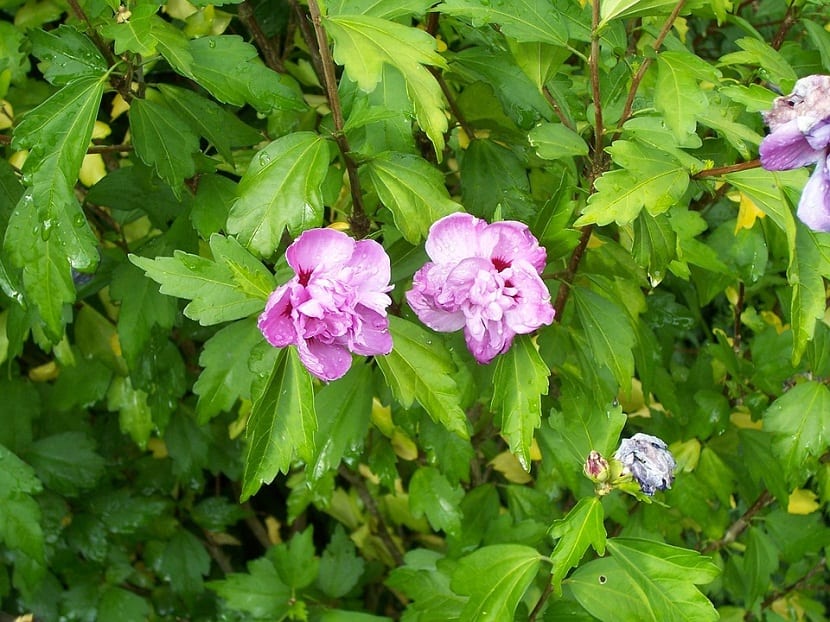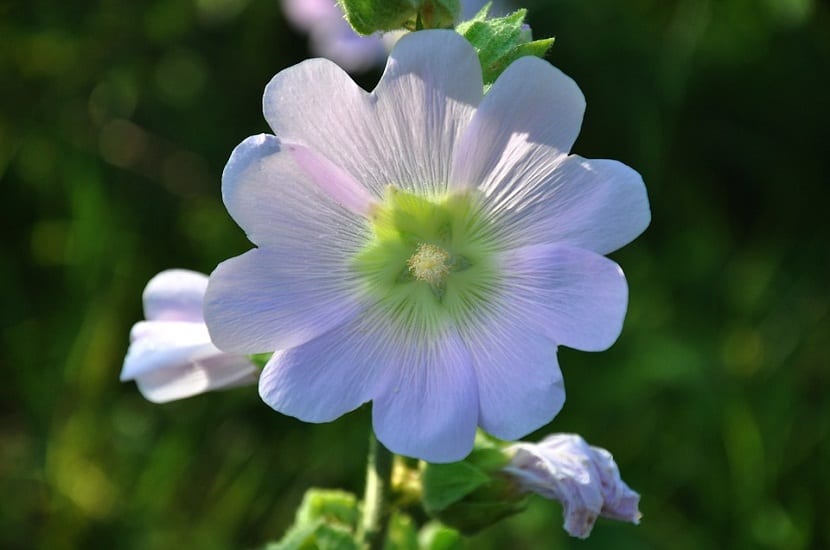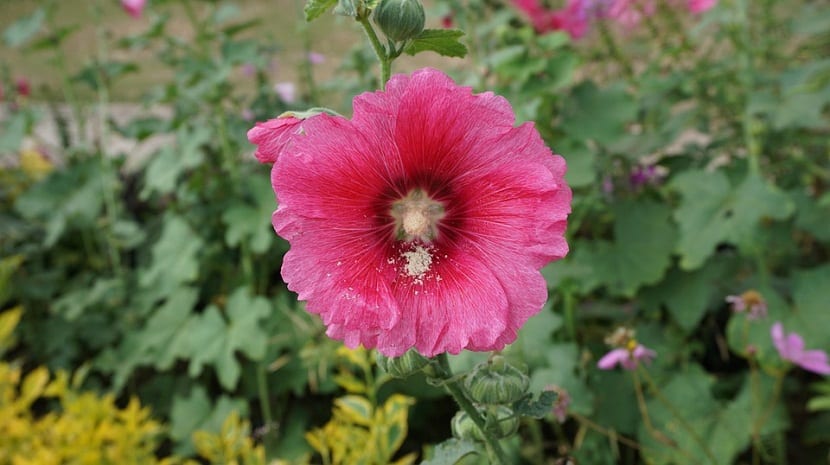
The hollyhock or royal mallow as it is also known, is a plant that comes from the Mediterranean, which adapts very well to marine gardens and that are subjected to salt, to give us very intense flowers throughout the summer.
Usually we are very used to hearing about hollyhock plant especially to use it in infusions or in poultices.
Characteristics of the hollyhock or royal mallow

In its lower part, hollyhock is one of the plants that is used most often due to its analgesic effect. Nevertheless, the Royal Malva or better known as hollyhock or royal purple is also one of the varieties of plants ready and without effect for decorative use.
The hollyhock adapts very well, even in infertile places, therefore it is not necessary to have a soil specifically rich in nutrients. Because this is a Mediterranean plant, we can use it even in gardens that are in maritime areas without having to worry about salinity problems or very intense heat.
If the case occurs that the soil is very dry, it is best to water that is very abundant, but taking into account that we will only do this if the drought lasts longer than normal.
The hollyhock is also an excellent plant that can be very useful to cut the wind, this due to the coverage that is in the air or equally in the areas where the climate is sufficiently humid.
The stems of this plant are quite long and at the same time very tall, while its flowers are very large. At first glance, the hollyhock reminds us of something broken, however, is perfect especially when we do not need to prune or make some very defined cuts.
The royal mallow it is a plant that prefers places that are warm and that at the same time they are protected, even in the flower beds that are sunny and specifically those that are exposed to sunlight.
It is also an excellent option for decorating our walls which are a little bare in the summer and very difficult to cure with other types of species a little more classic, being too afraid of humidity.
Soils and fertilizers
As for how to plant this plant, hollyhock should be placed in soil that is fully tilled. Although it is not necessary to add additional products such as manure or some type of natural fertilizer.
If the substrate is very heavy and at the same time bulky with stagnant water, what we can do is put a lot of river sand, since it cleans in a medium particle size, something that greatly benefits drainage.

If we have planted royal mallow in the past year, We can also do a small pruning, especially in the branches where the buds began to open. In this way it is reorganized within the garden and where we will place the plant, in a slightly more complete and compact space.
Reproduction of the hollyhock
Hollyhock is a plant that can be reproduced by means of seeds, although it can also be done faster through semi-woody grafts.
The small grafts can be about 10 to 15 centimeters in length and they should be collected when spring is about to end and later organized in jars mixed with sand and peat.
As for the youngest grafts, we can also use tutors to help us with growth and development of the branches of this plant over the years, mainly when it has to do with a bush or slightly old specimens that are undermined when flowering is very limited and actually has a very short life time.